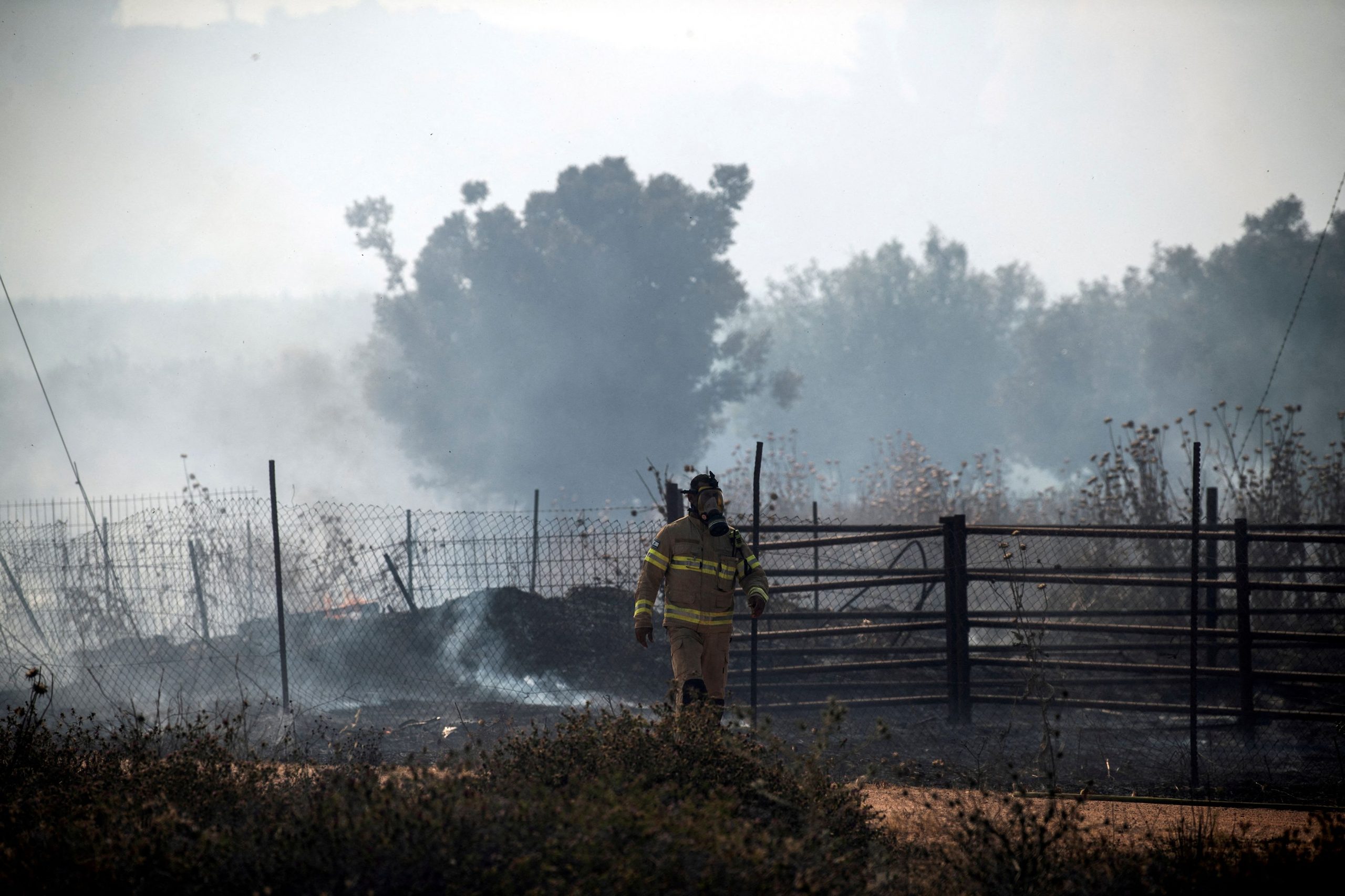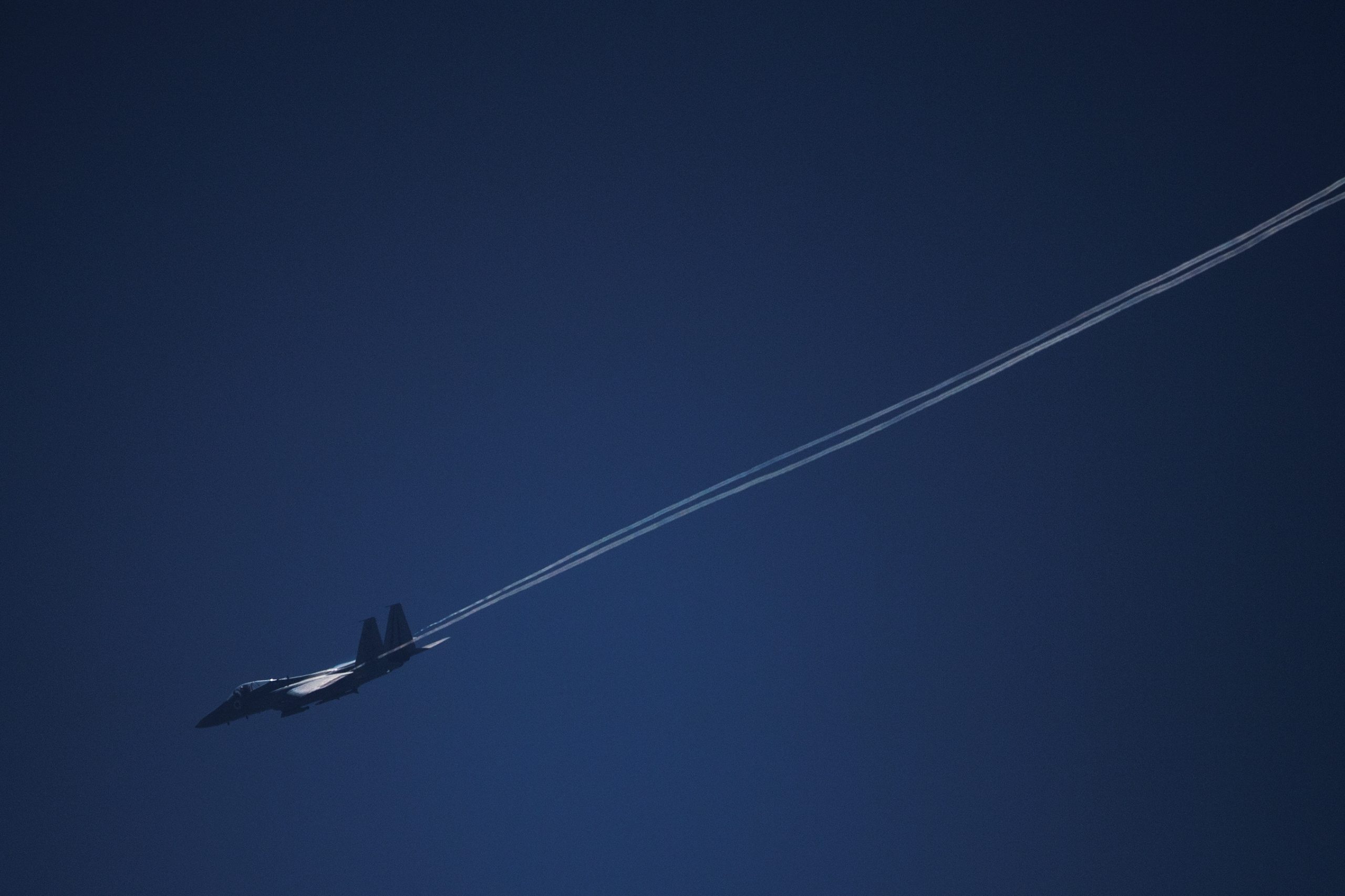Tensions have been rising between Israel and Hezbollah following the killing of the Lebanese group’s top commander, Taleb Sami Abdullah, on Tuesday, raising fears of a wider and all-out war in Lebanon after months of clashes between the two sides.
“Hezbollah is getting bolder and Israelis are surprised”
Hezbollah, a powerful Iranian-backed Lebanese movement, fired more than 200 rockets at Israel in retaliation on Wednesday and launched a significant but smaller barrage on Thursday.
These developments are only the latest in a series of hostilities that show that Hezbollah’s attacks on Israel are becoming more ferocious and sophisticated. This tactical change in the scope of the Lebanese group’s attacks compared to the first weeks of the conflict has caught the eye of many observers.
Following the October 7 attack on Israel led by Hamas and the war in Gaza, Hezbollah began fighting on Lebanon’s southern border in a show of solidarity with the Palestinians.
Since then, the Lebanese movement has demonstrated its ability to shoot down several advanced Hermes 900 drones, fire anti-aircraft missiles at Israeli aircraft it says forced them to retreat, and even conduct a token strike on an air defense unit, Iron Dome.
“Hezbollah Surprises Israelis”
Amal Saad, a Hezbollah expert and politics lecturer at Cardiff University, said: “Hezbollah is becoming emboldened and I think the Israelis are surprised by that.
“They know what it has, what its arsenal is, but they don’t think they would have the courage to use it, at least not for Gaza,” he said. Middle Eastern Eye, This indicates that Israel expected Hezbollah to reserve such weapons for an imminent war with Lebanon.
Experts say the escalation may be related to the political deadlock in Gaza ceasefire talks. On May 31, US President Joe Biden released a cease-fire plan that is identical to a proposal accepted by Hamas weeks earlier. However, Israel refuses to sign any plan to permanently end the war, which Hamas insists on.
While the West and Israel hope pressure on Hamas will force the Palestinian movement to back down on its demands, experts say Hezbollah is using its own tactics.
US-based arms expert Mustada Assad told MEE: “The political situation and stalemate we have at the moment means the only way is to show you have advanced capabilities without starting a global, final war”.
He even agreed with the argument that ongoing ceasefire talks in Gaza may have encouraged Hezbollah to apply more pressure.
Hezbollah linked the closing of the frontline to an end to the war in Gaza. “Israel must be pressured to agree to this idea,” he added.
“Hezbollah will start showing more of its weapons”
Saad, for his part, argued that Hezbollah was trying to increase the price Israel would have to pay if it did not sign a deal with Hamas.
“That cost is that the north will catch fire and Hezbollah will be more brazen in its attacks and will start to use more sophisticated weapons and show more weapons like the anti-aircraft weapons it started using last week and this week,” he stressed.


An Israeli firefighter near smoke and flames after rockets were fired into Israel from Lebanon (Credit: REUTERS/Gil Eliyahu)
Hezbollah’s drone and rocket attacks have fueled widespread fires in northern Israel in recent weeks, angering top Israeli officials. Similarly, Israeli attacks in southern Lebanon have burned large swathes of land, with Israel using a makeshift catapult.
Since Hezbollah and Israel fought a 40-day war in 2006, they have occasionally exchanged blows to contain a potential escalation.
During the current round of war, Israeli airstrikes in Lebanon have killed 450 people, including at least 80 civilians. Meanwhile, Israel says 15 of its soldiers and 10 civilians were killed.
“Ready for any expansion”
The Lebanese movement has carried out more brazen drone strikes in recent weeks, while Israel has struck deep into Lebanon and carried out several targeted missions.
While this is the largest expansion since 2006, it remains within the parameters of Hezbollah and Israel and has yet to trigger an all-out war.
According to Assad, Hezbollah “hasn’t put everything down yet” and the organization’s actions are “a framework for managing escalation”.
Qasim Ghasir, an analyst close to Hezbollah, told MEE that the group had changed the type of attacks it would launch “first, in solidarity with Gaza and in response to Israeli attacks”.
While Hezbollah’s attacks send a deterrent message to Israel, Kashir added, they are intended to tell Israelis that “Hezbollah is ready for any escalation.”
At the start of the war in Gaza, Hezbollah’s involvement in the “Unity Front” focused largely on Israeli surveillance targeting militants stationed near the border.
These operations cost the Lebanese movement dearly, as Israel targeted groups of militants, killing many of them in a single day. The losses appeared painful for Hezbollah, whose forces have been hardened by fighting Syria’s war on behalf of President Bashar al-Assad.
“She learned from her mistakes”
Asad believes it was an initial mistake, which the team later corrected.
“In the first weeks, Hezbollah fought as if it were fighting in Syria and suffered heavy losses because the doctrine it had in mind was using operations on the board, that is, operations at the brigade level,” he said.
“The Israelis found it easy and successfully targeted all groups. “Hezbollah has learned from its mistakes and has returned its tasks to groups of two or three,” he added.
On the other hand, Saad believes there is always a kind of “contingency plan” for war-like situations, as Hezbollah, a broad coalition of countries in the Middle East and the so-called Iranian-backed axis of resistance along with armed groups. In Gaza.


An Israeli fighter jet flies over the Israel-Lebanon border (Credit: REUTERS/Gil Eliyahu)
“I think Hezbollah deliberately started with a counter-surveillance strategy in order to get to this point where they can launch attacks on military structures, on various targets that are beyond surveillance,” he said.
While disabling Israeli border surveillance technologies facilitated Hezbollah’s ground movements, Israel used the group’s newfound weapons by exploiting Lebanon’s mountainous, forested geography.
According to him, the organization adapted “very well” to the conditions against Israel. “Hezbollah knows that short-range attacks are very successful. It’s a technology that blends with the landscape,” he added.
“can return fire”
Recent reports in the Israeli media suggest that Israel is seeking US help to prevent Hezbollah from escalating the conflict along the northern border.
In addition, the share price of Israeli arms company Elbit Systems fell after Hezbollah successfully shot down its drones over Lebanon. Experts believe the developments have heightened concerns about Israel’s rival in the north, which is often seen as the world’s most powerful non-state actor.
“On the other side of the border, the Israelis realized they had an agency capable of returning fire,” Assad said. “That in itself is an achievement because they are not usually used to questioning their superiority or questioning the capabilities and technology of other frontiers,” he added.
Saad said the broad scope of Hezbollah’s attacks, both in scale and quality, prompted Israel to assassinate Taleb Sami Abdullah.
As the organization is eager to maintain pressure on Israel and continue its deterrence attacks, expansion within the rules of unofficial engagement may be the only way forward.
“They must move on after the carnage, otherwise deterrence will be an inappropriate word,” Assad said.